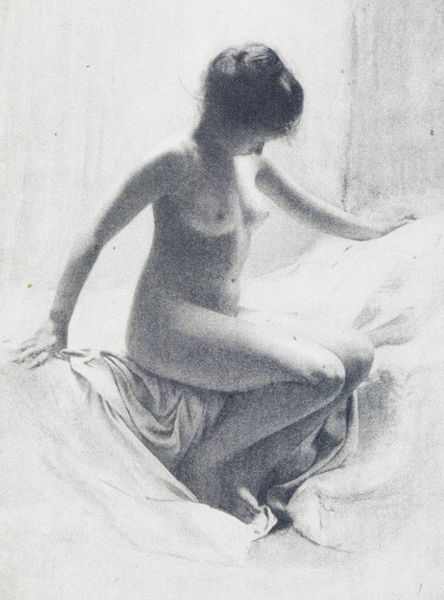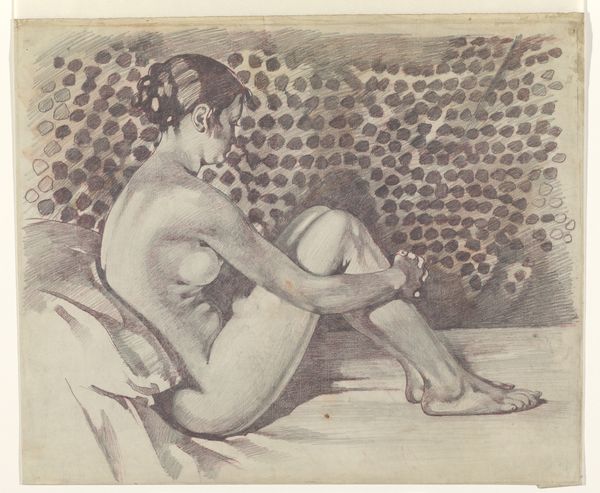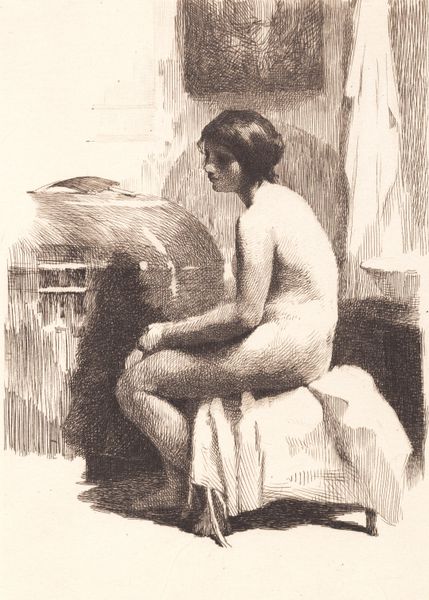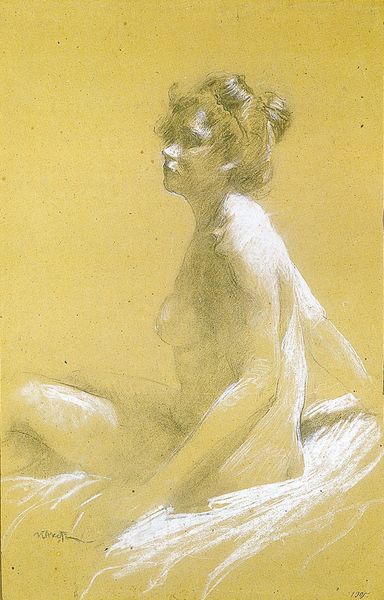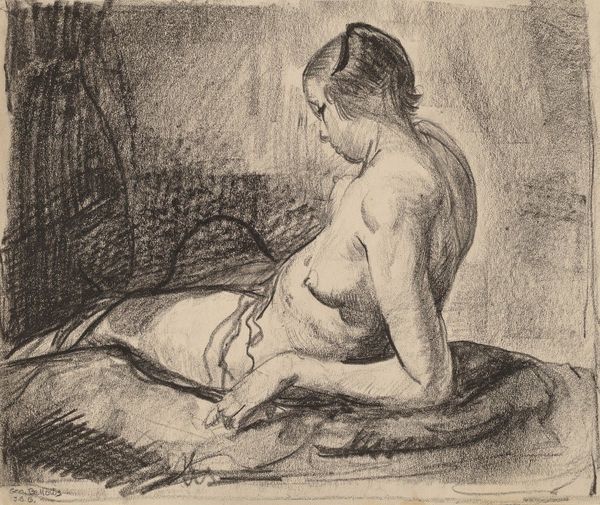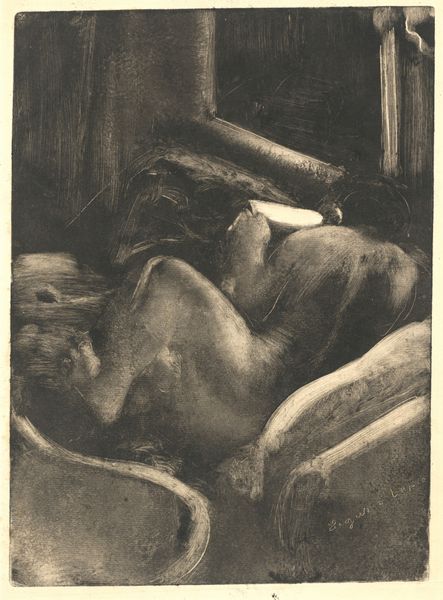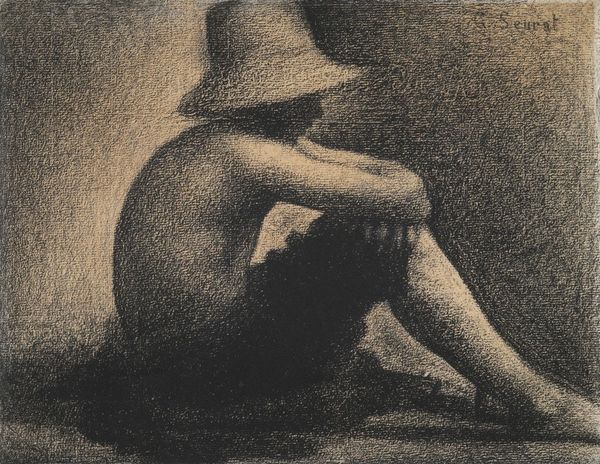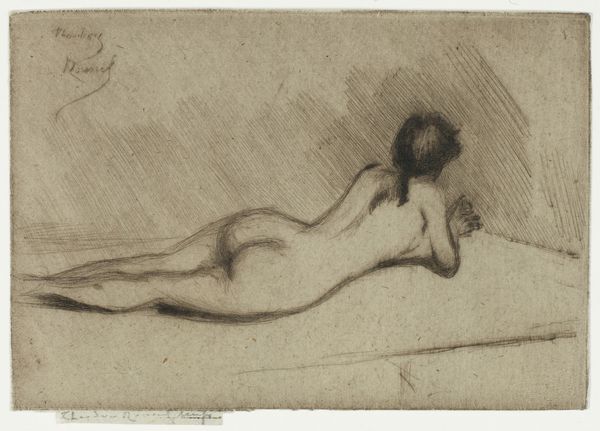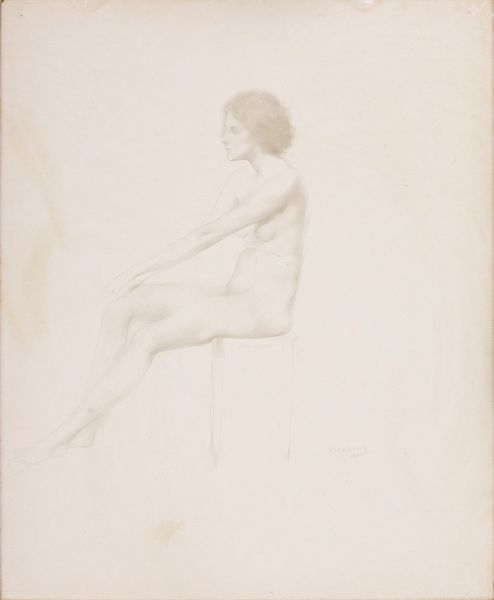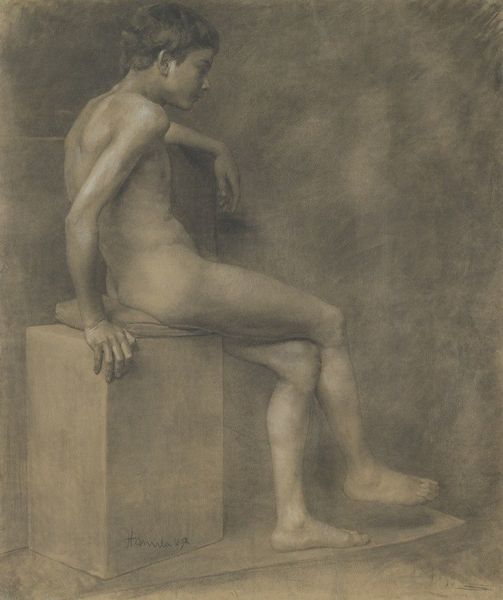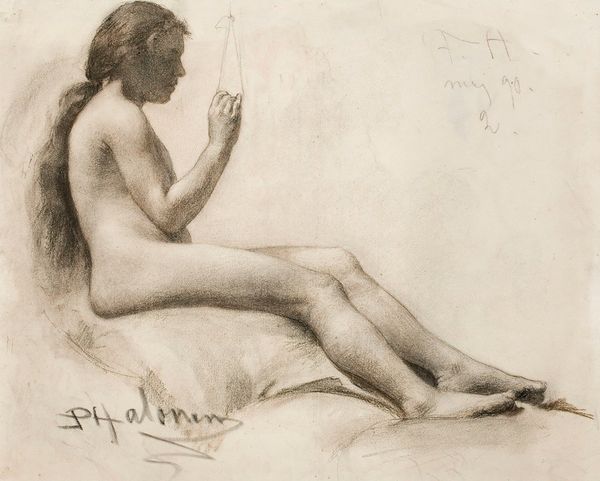
drawing, photography, charcoal
#
portrait
#
drawing
#
pictorialism
#
charcoal drawing
#
photography
#
charcoal
#
nude
Copyright: Public domain
Editor: This is Robert Demachy's "Study," from 1906. It's a photograph rendered in a style reminiscent of charcoal drawings, with a nude figure seated in soft focus. The texture created through the printing process is so tactile. What’s your read on this piece? Curator: What strikes me is Demachy's engagement with process. He uses photography, a medium tied to mechanical reproduction, to create something decidedly painterly. Think about the labor involved – manipulating the photographic print to mimic the soft, blurred edges of a charcoal drawing. It challenges the traditional hierarchy between "fine art" and craft, wouldn’t you say? Editor: Absolutely! It’s almost as if he’s deliberately obscuring the line between them. How does that fit into the artistic context of the time? Curator: This was during the height of Pictorialism. Artists were pushing photography to be recognized as an art form, often by imitating painting techniques. But Demachy is also playing with the idea of mass production versus the handmade. He’s using a technology developed for reproducibility but creating unique, unrepeatable prints through his manual manipulations. Does that tension speak to you at all? Editor: Yes, definitely. It makes you think about the role of the artist's hand, even in a mechanical process like photography. And I can't help but consider who had access to these kinds of images and what that says about society at the time. Curator: Precisely. Consider the social context, the rise of consumer culture, and the increasing commodification of the body. Demachy’s work operates within that matrix, reflecting and perhaps even critiquing those developments through its emphasis on both mechanical reproduction and artistic intervention. Editor: I hadn’t thought of it that way before! Thinking about the material processes and the social context gives the image a whole new depth. Thanks! Curator: Indeed, paying attention to material processes opens up crucial avenues for understanding the broader cultural meanings embedded within the image.
Comments
No comments
Be the first to comment and join the conversation on the ultimate creative platform.
